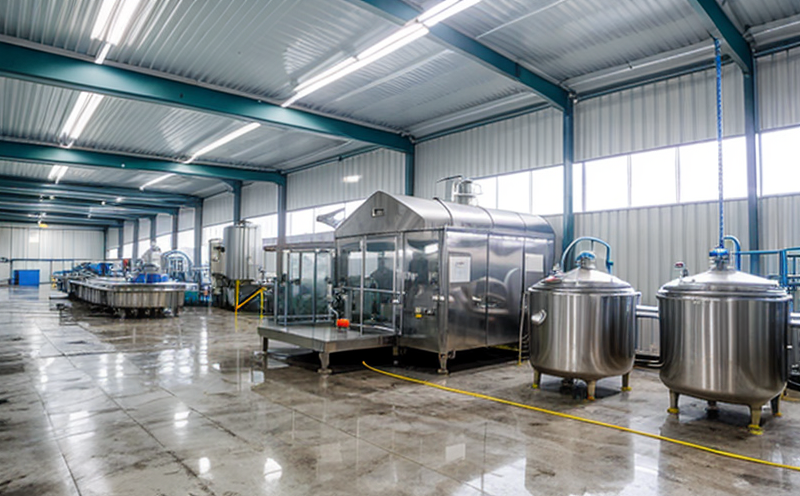Seafood processing facility inspection
The inspection of seafood processing facilities is a critical component in ensuring food safety and hygiene. This process involves the meticulous examination of every aspect of the facility, from raw material handling to finished product packaging. The primary goal is to identify potential hazards that could affect the quality, safety, and hygiene of the final products, thereby protecting public health.
Seafood processing facilities must comply with a stringent set of standards and regulations, including those outlined in ISO 22000 for food safety management systems. These standards are designed to prevent food safety hazards by implementing effective control measures throughout the food chain. By adhering to these guidelines, seafood processors can ensure that their products meet international quality benchmarks.
The inspection process typically begins with an initial assessment of the facility’s layout and design. This includes checking for proper separation between different stages of processing, ensuring adequate space for cleaning and maintenance activities, and verifying the placement of waste disposal facilities to minimize contamination risks. Following this, inspectors evaluate equipment and machinery used in the production line, focusing on their condition, calibration, and maintenance schedules.
Raw material handling is a crucial aspect of the inspection process. This involves assessing how seafood products are received, stored, and prepared for processing. Proper temperature control, sanitation practices, and segregation measures are essential to prevent cross-contamination between different types of seafood or between raw materials and finished goods. Inspectors also review the storage facilities and refrigeration systems to ensure they meet specified temperature ranges.
During inspections, processors must demonstrate their adherence to hygiene standards. This includes regular cleaning and disinfection procedures for processing areas, as well as stringent personal hygiene practices among staff members. The frequency and thoroughness of these measures are evaluated against set guidelines. Additionally, the presence of pest control mechanisms is assessed to ensure that rodents or insects do not contaminate the product.
The quality assurance team plays a vital role in maintaining consistent product quality throughout the production process. They conduct regular checks on various parameters such as moisture content, pH levels, and sensory attributes like color and texture. These measurements are compared against established standards to ensure that all products meet consumer expectations.
One key area of focus during inspections is the handling of waste materials generated during processing. Proper disposal methods, recycling practices, and minimizing environmental impact are crucial considerations here. Compliance with local regulations regarding waste management contributes significantly to a facility’s overall sustainability efforts.
In summary, thorough inspection of seafood processing facilities helps maintain high standards of food safety and hygiene. It ensures that all stages of the production process comply with relevant regulatory requirements while promoting best practices in cleanliness and efficiency.
Why Choose This Test
- Compliance Assurance: Ensures adherence to international standards like ISO 22000, providing peace of mind for compliance officers.
- Enhanced Quality: Identifies potential issues early in the production process, leading to better product quality and consistency.
- Risk Management: Minimizes risks associated with foodborne illnesses by addressing hygiene concerns promptly.
- Sustainability: Promotes responsible waste management practices that contribute positively to environmental sustainability initiatives.
The inspection process not only helps seafood processors stay compliant with regulations but also enhances their reputation among consumers who value safety and quality in their food choices. By choosing this test, facilities can demonstrate their commitment to maintaining the highest standards of hygiene and quality throughout the entire production cycle.
Quality and Reliability Assurance
The inspection process for seafood processing facilities includes several key areas where quality and reliability are crucial:
- Raw Material Inspection: Ensuring that all incoming seafood is of high quality and free from contaminants.
- In-process Monitoring: Regular checks during various stages of processing to maintain consistent standards across production lines.
- Final Product Testing: Conducting final analysis on packaged products before they leave the facility, ensuring compliance with all specified parameters.
By incorporating these elements into their inspection protocols, seafood processors can ensure that every step of the production process contributes to producing safe and reliable seafood products. This commitment to quality assurance fosters trust among customers while also protecting the brand’s reputation in the marketplace.





